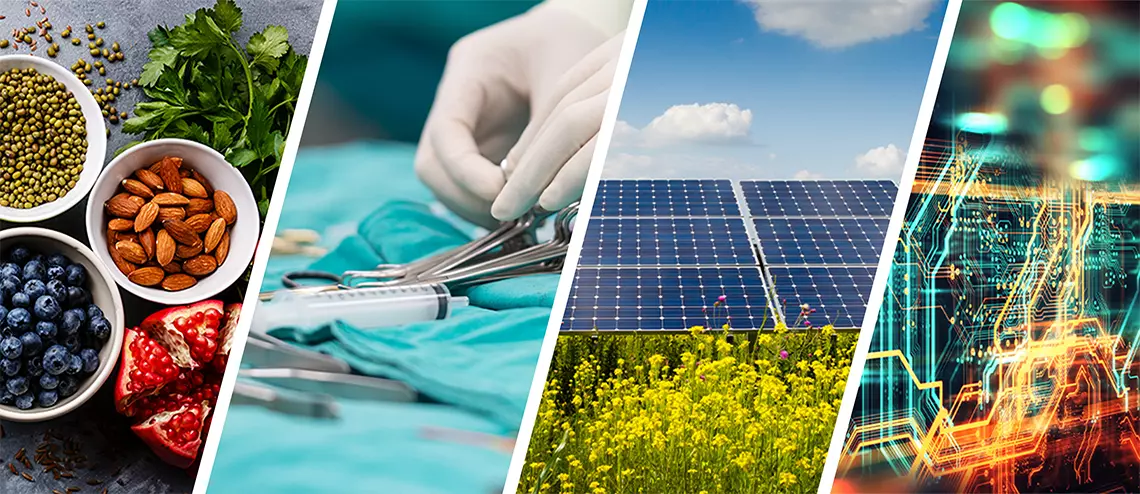Projects at the Life Cycle Assessment research group

-
CHEERS – Using brewery sidestreams to manufacture innovative products
The industrial production of beer often generates large volumes of by-products that are not used optimally. The European project "CHEERS" aims to convert unused by-products and waste of beer production such as bagasse, wastewater, CO2 and CH4 into innovative bio-based products. Currently, bagasse is used for ...
-
FuelSOME – Multifuel SOFC system with Maritime Energy Vectors
FuelSOME’s vision is to make a substantial contribution to the required drastic reduction of Greenhouse gases (GHG) emissions from global shipping (climate change mitigation) with a reduction of air pollutants, such as NOx, SOX, and pollution prevention and control, at the same time. The future roadmap of the ...
-
C-Atoms for Circular Chemistry (CO2NVERT)
In order to achieve the overarching goal of net-zero emissions by 2050, a paradigm shift toward a cir-cular economy for carbon has to be put in place. The systemic objective of the Flagship project is to provide the society with a viable case study of the CO2 circular economy applied to the chemical industry. The ...
-
Life Cycle Inventories of solid fossil fuels
The Federal Office for the Environment (FOEN) commissioned an update of the inventory data for the production of electricity from coal, peat or lignite and their process chains in the UVEK:2022 database. This update provides the upcoming version of the UVEK:2022 database with updated inventories for these types of ...
-
Remote Sensing Metrics for Life Cycle Assessment (RSM4LCA)
-
LOFT – Local food for the future
The project aims to improve vertical farming production and operational efficiency by combining innovative production know-how and technologies with enhanced sustainability. The approach will establish the feasibility and profitability of sustainable, year-round production of high-quality crops. ...
-
Environmental and Social Assessment at Mine Sites using Remote Sensing and Geoinformatics
-
CarboPHOS – Phosphorous recovery through hydrothermal carbonisation of sewage sludge
CarboPHOS develops a technological solution for the recovery of phosphorus from sewage sludge using the hydrothermal carbonization process. An overview of the availability of P-species in Swiss sludges is being compiled and the technology chain HTC - filtration - crystallization is demonstrated in pilot scale. ...
-
Innovation Booster Applied Circular Sustainability
From 2021 to 2024, the Innovation Booster (IB) Applied Circular Sustainability supports the pre-development of radical solution ideas for 100% recyclable products and systems - and this for all industries and economic sectors in Switzerland.
-
ShopHero
The research collaboration ‘ShopHero’ proposes a novel, scalable and tailored approach for consumers (1) to track and monitor the sustainability of their groceries and food waste, and therefore, (2) to change their behavior. We plan to process automatically-collected digital receipts from grocery purchases to ...
-
Cocoa in Numbers – from data to knowledge
Nowadays consumers of cocoa and chocolate products are not only interested in safe high-quality products but also in products which are sustainable and produced under fair ecological and social conditions. The demand for transparency of information on the condition of cultivation, production and trade as well as on ...
-
Climate-KIC Summer School
-
Campus Challenge Sustainability Exchange
It is undisputed that every human being must make his or her contribution if global warming is to be limited to less than 1.5 degrees. However, neither research nor practice is clear about which behavioral patterns are best for each individual. It is also unclear how people are ultimately to get involved. The ...
-
Life Cycle Sustainability Assessment (LCSA)
-
Sustainable Food Chain Model
The value of the food wasted today as food waste in retail and the food industry in Switzerland can be estimated at over 1 billion francs and pollutes the environment with around 10 trillion ecopoints, which corresponds to half of motorized private transport. The federal government is currently developing an action ...
-
BIOMAT (Integrated Bio-based Materials Value Chains)
The aim of the project is to develop sustainable bio-based materials to replace the fossil based counterparts. On the one hand, biomaterials will be produced from side-stream products of agro-food industry. On the other hand, green technologies such as cultivation of microalgae will be used to produce biomaterials. ...
-
Extending the lifespan of mobile devices
Extending the service life of smartphones and other Internet-enabled mobile devices could significantly reduce their ecological footprint. In pursuit of this, it will be necessary to develop innovative approaches that are both economically viable and appealing to consumers.
-
Life Cycle Assessment of Tourism in Thailand
The proposed seed project consists of two main parts: In the first part, a life cycle assessment (LCA) is conducted to analyze the environmental impact of tourism activities in Thailand. Based on the analysis, practical recommendations for providing these services more sustainably are developed. In the second part, ...
-
Assessment of mineral oil tax relief for synthetic fuels from biological methanation
The debates in 2004-2007 on the tax exemption of fuels from renewable raw materials focused mainly on 1st generation fuels. Consequently, the instruments are also geared to this type of fuel. At that time, however, the legislator made it possible for fuels from renewable energy sources to also benefit from the tax ...
-
Extension of the study on life cycle assessments for alternative substrates to peat
The aim of the research study is to extend the study by Eymann et al. (2015) of the Zurich University of Applied Sciences (ZHAW) by selected substrate components and substrate mixtures which, based on defined criteria, have a high potential as peat substitutes. Analogous to the 2015 study, the present research ...